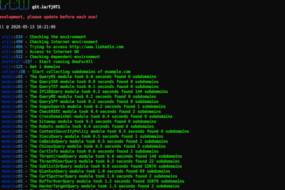
In the realm of cybersecurity, where threats evolve constantly, the emergence of quantum computing presents both opportunities and challenges. As organizations embrace this next frontier of computing power, it becomes imperative to fortify the security of their digital infrastructure. Subdomains, often overlooked in security protocols, demand special attention in this post-quantum computing era. In this comprehensive guide, we delve into the best practices for configuring subdomains to enhance security and mitigate risks.
Understanding Subdomains
Subdomains are subdivisions of a website’s primary domain, allowing for the organization of content and services. While they offer flexibility and customization, they also introduce potential vulnerabilities if not configured and secured properly.
The Importance of Subdomain Security
Incorporating robust security measures for subdomains is vital for safeguarding sensitive data, maintaining user trust, and mitigating cyber threats. Attackers often target subdomains as entry points to exploit vulnerabilities within an organization’s network.
Common Subdomain Security Risks
Subdomain Takeover: Attackers exploit DNS misconfigurations or expired service subscriptions to gain control of subdomains, enabling them to launch various attacks.
Data Breaches: Inadequately secured subdomains may expose confidential information, leading to data breaches and regulatory non-compliance.
Malware Distribution: Compromised subdomains can be used to distribute malware or phishing campaigns, tarnishing the organization’s reputation and causing financial losses.
Best Practices for Subdomain Configuration
Implementing effective security measures is paramount in protecting subdomains from potential threats. By adhering to best practices, organizations can bolster their cyber defenses and minimize security risks.
Conduct Regular Subdomain Audits
Perform periodic audits to identify and monitor all existing subdomains. Utilize automated tools to scan for unauthorized or misconfigured subdomains, ensuring comprehensive coverage.
Employ Strong Authentication Mechanisms
Enforce robust authentication methods, such as multi-factor authentication (MFA), for accessing subdomain administration portals. Utilize strong passwords and consider implementing certificate-based authentication for added security.
Implement Secure DNS Practices
Adopt secure DNS configurations, including DNSSEC (Domain Name System Security Extensions), to prevent DNS spoofing and cache poisoning attacks. Regularly review DNS records and monitor for unauthorized changes.
Utilize HTTPS Encryption
Encrypt subdomain traffic using HTTPS (Hypertext Transfer Protocol Secure) to protect data in transit and prevent man-in-the-middle attacks. Obtain SSL/TLS certificates from reputable Certificate Authorities (CAs) and configure servers to enforce HTTPS.
Implement Access Controls
Implement granular access controls to restrict access to sensitive subdomain resources. Utilize role-based access control (RBAC) mechanisms to assign permissions based on user roles and responsibilities.
Regularly Update and Patch Systems
Stay vigilant against emerging threats by promptly applying security patches and updates to subdomain hosting servers, web applications, and related software components. Regularly assess vulnerabilities and address them proactively.
Enable Security Headers
Leverage security headers, such as Content Security Policy (CSP) and HTTP Strict Transport Security (HSTS), to enhance browser security and mitigate risks associated with cross-site scripting (XSS) and other attacks.
Final Words
In an era defined by rapid technological advancements and evolving cyber threats, prioritizing the security of subdomains is imperative for organizations seeking to safeguard their digital assets and preserve trust among stakeholders. By implementing the best practices outlined in this guide, organizations can fortify their subdomain infrastructure and navigate the complexities of the post-quantum computing landscape with confidence.
Commonly Asked Questions
1. How do I prevent subdomain takeovers?
Regularly monitor subdomain ownership and expiration dates.
Implement proper DNS management practices and promptly address DNS misconfigurations.
2. Why is HTTPS encryption essential for subdomains?
HTTPS encryption ensures secure communication between users and subdomains, protecting sensitive data from interception and tampering.
3. What role do security headers play in subdomain security?
Security headers enhance browser security by enforcing policies that mitigate common web vulnerabilities, such as XSS and clickjacking attacks.
4. How can I ensure compliance with regulatory requirements for subdomains?
Implement robust access controls, encryption protocols, and security measures outlined in regulatory standards, such as GDPR and HIPAA.
5. What steps should I take if I suspect a subdomain compromise?
Immediately revoke access credentials and certificates associated with the compromised subdomain.
Conduct a thorough investigation to identify the root cause and mitigate potential damages.
Advertisement








